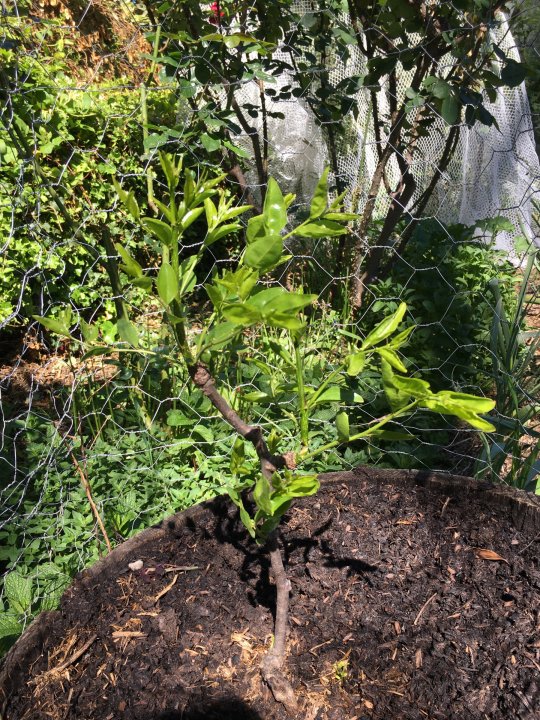4 comments
Comment from: adrian_van_leest Member
Comment from: kristi Member

And thank you Adrian for taking the time to write this, and for your kind words.
Yes, those fruiting branchlets are something else when you’ve never encountered them before!
Repotting and fertilising your Chico was of course good to do, but I wouldn’t be surprised if it responded the same way if you hadn’t touched it actually! Some of them just seem to be like that.
The Li and Lang mentioned in the last paragraph, for example, are of similar age and have always been potted, watered and fertilised the same, yet responded so differently last year. Lang was off to the races from day one, while runty Li just sat there and fumed about something for a year before deciding to join the world.
The Lang, now 110cm tall from a 30cm start, appears to have slowed its growth and is developing more secondary (permanent) branches from which fruiting branchlets are growing.
The Li was 22cm high at the beginning of spring last year, and 22cm high at the end of summer this year! But this spring, it pumped out one massive bright green 55cm shoot that will eventually harden, brown, and become a permanent extension to the trunk.
I can see another post coming up! Thank you so much again for your comment which has inspired me - I shall take photos of those two, with a write-up that hopefully explains all this better to anyone reading this who hasn’t experienced these fascinating trees for themselves.
best regards,
Kristi
Comment from: adrian_van_leest Member
As a picture is worth a thousand words, here is a picture of my Chico Jujube tree (to which I referred in the above post) now growing two structural branches in its second year (i.e. after purchase).
The photo also shows the mini sucker poking its head up through the mulch. Note that at the base of the branch on the right a snail seems to have taken a chomp out of the new trunk – but I’m sure that time will heal that. I will watch it closely and then splint it if it doesn’t thicken somewhat. This thin part seems to have had no effect on the health of the branch above it, so the juices must be flowing quite well both ways through the thin bottle neck, and I understand jujube wood is quite hardy. Of course, I wouldn’t want to lose a whole branch laden with fruit. Also, I hadn’t realised that the other branch just below that could become another permanent branch in any case. The chicken wire is there to protect it from a swamp (black) wallaby that keeps eating my roses, young apples, spinach, fennel and carrot seedlings every night. The drought brings it in from Mount Ainslie to suburban heaven, where the gardens are still lush with lawns and spring growth.

Comment from: airlie Member
Here in Goulburn NSW we’re a couple of months behind the kinder climes of Sydney and the coast and our recently planted Li and Ta-Jan have only just started to come into leaf (the Ta-Jan a couple of weeks before the Li).
Both are very small atm and it will be interesting how they progress now that we’ll shortly be coming into summer.



















Hi Kristi. Thanks for this most informative description of how a jujube tree can behave. Last year I had the same experience with a Chico jujube tree that was in a 30cm pot when I bought it. I was advised to leave it in the pot so that it could establish itself. It produced only fruit branchlets (which I thought were its normal structural branches). The six or so jujubes that resulted were excellent eating, but the branches all died and I was worried the plant had gone to heaven (or hell in this case). The pictures here show exactly what I experienced. But no, after repotting into a half wine barrell with lots of composted chicken manure and old potting mix in late autumn, Spring came and so did Chico’s resurrection, with four bunches of fruiting branchlets and two new structural branches showing lots of vigour. The suckers have also started to push through the soil. So thanks for this webpage, I will bookmark it for frequent reference to your excellent posts.